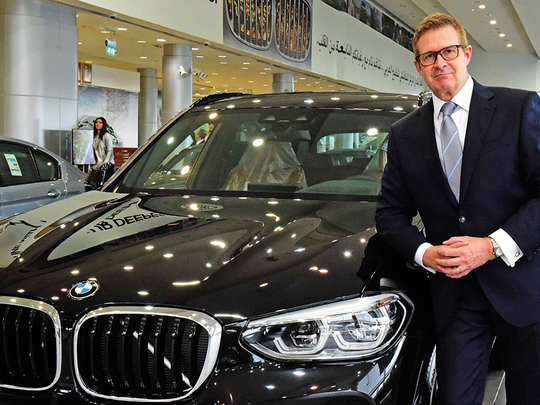
Dubai
Closing the gap between the fuel-driven present with an electric future can be quite the task for carmakers. But BMW believes it has the plug-in solution to make that happen — hybrids.
In this region, the luxury automotive marque is steadily adding to its hybrid options on key models, and coming under the “iPerformance” branding. There is not much fanfare accompanying any of this, but just getting the word out is more than enough, according to a top regional official. Currently, there are five hybrid versions available, including the 330e, the 740e xDrive and X5 Drive 40e. (And then there is the i8 sports car for those buyers who can mix a lot of discretionary spending power with being environmentally conscious.)
“Most were introduced in 2017 and we will slowly ramp up,” said Johannes Seibert, Managing Director at BMW Group M.E. “We want customers to know there is a new option besides the petrol models and while they wait for the electric cars.
“If there is a technology that bridges the petrol age and the electric, those are the plug-in hybrids.”
For local customers who still want to bide their time for an electric BMW version, they will need to wait until the end of this year. Because that is when the carmaker expects its dealership to start showcasing the i3 S, the sportier version to its battery-driven city car. The i3 S packs in 184hp to the standard model’s 170, and claims a 0-100 km/h in a nifty 6.9 seconds.
It was in May 2016 that the first i3 in Dubai was delivered to Dubai Police, for testing purpose. “At the moment, we are in a testing and homologation period for the i3s,” said Seibert. “We are not in a hurry (to launch). We share the enthusiasm of Dubai within the smart city concept on electro mobility, and we want to be here with the right product at the right time.
“Before that, we are introducing the i8 Roadster in the second quarter of this year and this is one of the best looking BMW models I’ve ever seen.”
BMW’s regional operations have just come off a fairly strong November … or as strong as the market situation has allowed it to be. It sold 2,928 BMW models, a gain of 4 per cent over the November 2016 tally. For the Mini range, the November 2017 numbers were up 3 per cent.
“I would say it was driven by a mixture of pre-VAT demand,” said Seibert. “But we are also seeing that — slowly — real customer demand is stabilising. The premium segment in the second-half of 2017 looked a bit better.
“In the year to November, the premium segment in the region is still down compared to 2016 by a low double-digit number. I would say, roughly, by 10-12 per cent. Looking at the surroundings, a stable performance for us is a good achievement.
“We forecast that 2017 will be on or slightly above 2016 levels. That’s our key ambition — it’s very much about relative performance.”
BMW in the Mideast can always call on the X factor
BMW just keeps adding to its X factor. Regional showrooms have just welcomed the X3 and by the end of the first quarter of 2018, it will be jostling for attention alongside the X2. Chances are both models could help the carmaker pick up a sales boost in the first-half of this year. And come in handy when Saudi Arabia formally allows women to get behind the wheels.
“In these markets, it’s very much about the X models — the X5 continues to be the most sold model before 7- and 5 Series,” said Johannes Seibert. “The X3 and X2 come in a segment where there is very little competition. The share of X models in the region was at 57 per cent even before X3’s launch. We can expect that this will go even beyond this level.”












